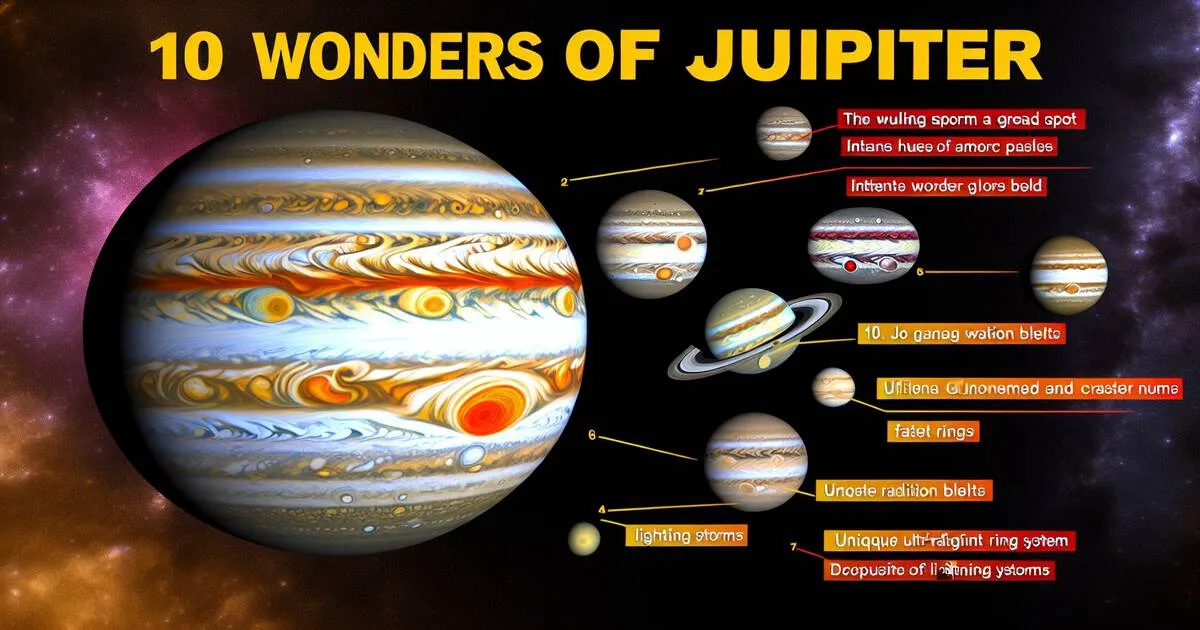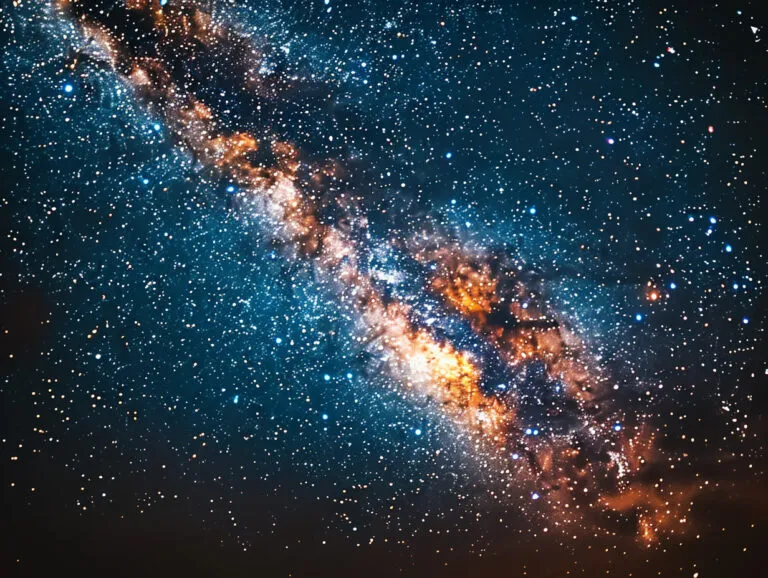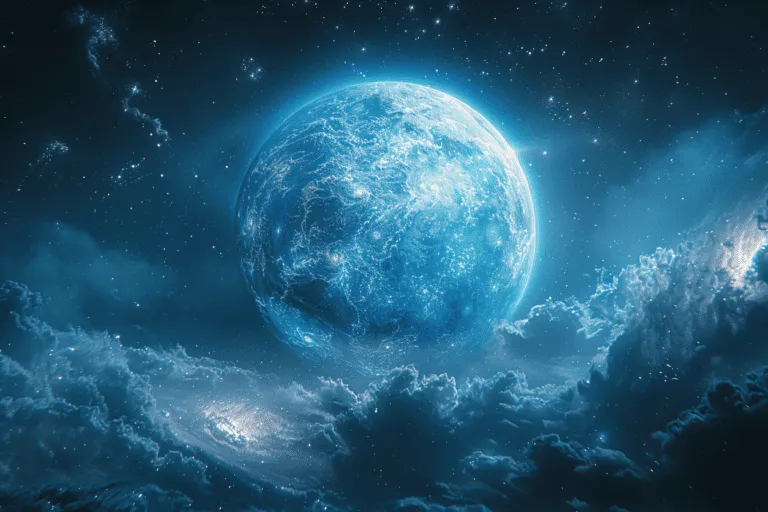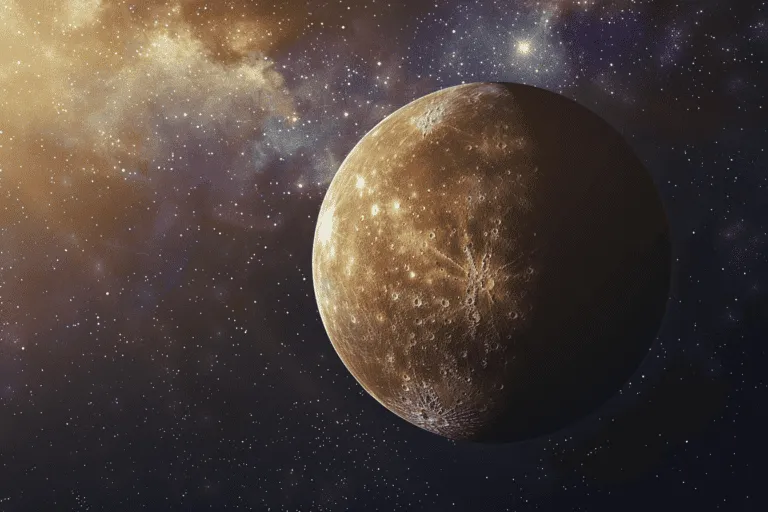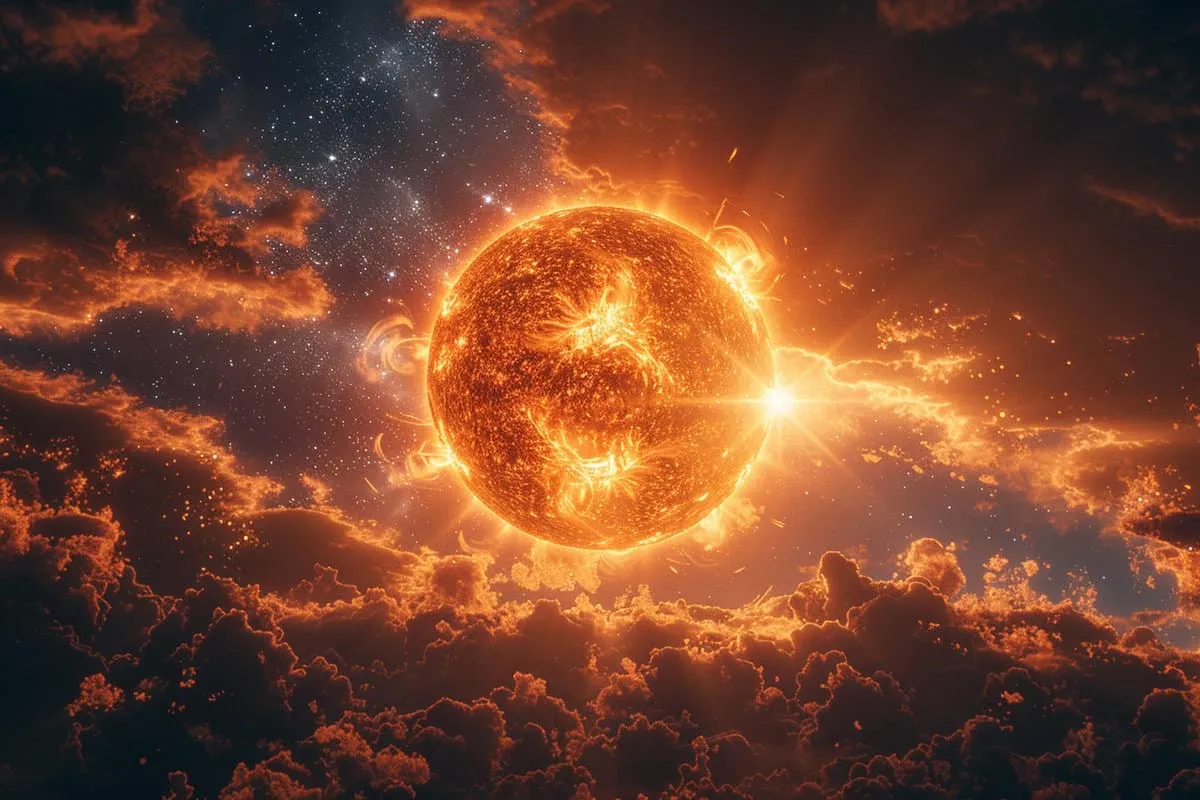Planet Jupiter Facts: Top 10 Wonders of the Solar Giant
Jupiter, a colossal gas giant, holds secrets that fascinate and mystify us. From its massive storms to the plethora of moons orbiting it, this planet is a treasure trove of wonders waiting to be explored. It’s not just about size; Jupiter’s unique composition and magnetic fields tell stories of the solar system’s early days. As we dive into these facts, you’ll discover why Jupiter is not only an astronomical marvel but also a crucial piece in understanding our place in the cosmos. So, if you’re eager for a cosmic journey unlike any other, scroll down to uncover our top picks on planet Jupiter facts.
1. Jupiter is the Largest Planet in Our Solar System
Jupiter truly stands out as a giant among its planetary neighbors. It’s not just big; it’s massive. When we compare Jupiter to Saturn, the next largest planet, it’s over two times larger. This size difference isn’t slight—it’s monumental.
But let’s put this into perspective with something we’re more familiar with – Earth. Imagine trying to fit Earths inside Jupiter; you would need more than 1,300 of them! That’s like filling up a huge bag with over a thousand basketballs.
And if that doesn’t impress you, think about this: all the planets from our solar system could snugly fit inside Jupiter with room to spare. Yes, even with its rings and moons, Saturn could comfortably sit inside Jupiter without touching the sides!
This fact alone makes Jupiter not only the king of planets in terms of size but also highlights how empty space really is within our solar system. The vastness between planets and their sizes compared to each other can be mind-boggling.
2. Named After the Roman King of the Gods
Jupiter, the largest planet in our solar system, carries a name that reflects its dominating presence among the planets. This name comes from mythology where Jupiter was not just any god but the king of all Roman gods. He ruled over the sky and thunder, showcasing his immense power.
In Roman culture, Jupiter was more than a deity; he symbolized authority and leadership. His ability to control thunder and lightning made him both feared and respected. This connection between Jupiter’s mythological background and its astronomical significance is no coincidence.
The naming of this giant planet after such a powerful figure highlights how humans have always looked up to the stars for inspiration. The Romans saw their gods as mighty beings who controlled natural elements, so it makes sense they would name one of the most visually dominant celestial bodies after their most supreme deity.
3. Home to 79 Known Moons, Including Ganymede, the Largest Moon in the Solar System
Ganymede, not just another moon orbiting Jupiter, stands out for being larger than the planet Mercury. This fact alone makes it a celestial body of immense interest. Ganymede is part of a family known as the Galilean satellites, which also includes Io, Europa, and Callisto. These are the four largest moons of Jupiter and were first discovered by Galileo Galilei in 1610.
The discovery didn’t stop centuries ago; many moons have been found orbiting Jupiter in recent years. This surge in discoveries suggests that there might be even more moons waiting to be found around this gas giant. As of now, Jupiter proudly holds the record with 79 known moons.
These large moons each tell a unique story about their formation and evolution around Jupiter. The existence of such many moons also hints at the complex gravitational interactions taking place within the Jovian system.
Among these numerous celestial bodies circling Jupiter, Ganymede shines brightest—not literally but figuratively—due to its size and distinction as the largest moon in our solar system. Its composition and magnetic field make it an object worthy of study for scientists aiming to understand more about our cosmic neighborhood.
4. Features a Giant Red Spot, a Massive Storm Larger Than Earth
Jupiter’s most famous feature is the Great Red Spot, an enormous storm that has been raging for at least 400 years. This massive storm is larger than the entire Earth, showcasing Jupiter’s immense gravity and turbulent atmosphere.
The winds within this colossal storm reach speeds of up to 432 mph. To put that into perspective, it’s much faster than any hurricane experienced on Earth. The power and longevity of this storm make it a fascinating subject for scientists and astronomers alike.
What makes the Great Red Spot even more remarkable is its visibility from Earth. Even with the most basic telescopes, amateur astronomers can catch a glimpse of this giant red blemish on Jupiter’s surface. It serves as a nice model for understanding atmospheric dynamics not just in our solar system but also in exoplanets orbiting other stars.
Observations have shown some changes in the size and color intensity of the Great Red Spot over time, adding another layer of detail to its study. These changes are believed to be caused by Jupiter’s complex weather patterns interacting with the storm itself.
5. Possesses a Powerful Magnetosphere, Strongest of Any Planet
Jupiter’s magnetosphere is not just any magnetic field; it’s a colossal force 20,000 times stronger than Earth’s. Imagine a giant magnetic shield wrapping around the planet, and you’ve got an idea of what we’re talking about here.
This immense magnetic power does more than just sit there looking impressive. It sparks auroras on Jupiter that are far brighter and more spectacular than those we see on Earth. These light shows in Jupiter’s upper atmosphere are like nature’s most extravagant fireworks display.
But the reach of Jupiter’s magnetosphere doesn’t stop close to home—it extends up to 3 million kilometers toward the sun. That’s as if you could stretch a line from Earth to the moon over seven times! This vast magnetic influence makes Jupiter an extremely active body in our solar system.
6. Has the Shortest Day of All Planets, Rotating Once Every 10 Hours
Jupiter spins on its axis faster than any other planet in our solar system. This giant gas ball completes one rotation every 10 hours. Imagine a day on Jupiter being less than half the time of a day on Earth!
This speedy spin has some wild effects. For starters, it whips up extreme weather and wind speeds that can reach up to 360 km/h (224 mph). That’s faster than any hurricane we’ve seen on Earth! These fierce winds are part of what makes Jupiter’s weather so fascinating and complex.
But there’s more. Because Jupiter rotates so quickly, it doesn’t have a perfectly round shape like most planets. Instead, it bulges at the equator and flattens at the poles, giving it an oblate appearance. This is because the rapid rotation causes material to spread outwards towards the equator.
The fast spin also plays a crucial role in shaping Jupiter’s magnetic field, which is much stronger than Earth’s. This strong magnetic field catches charged particles from the Sun, creating stunning auroras near its poles—much like the northern and southern lights on Earth but many times more powerful.
7. Composed Primarily of Hydrogen and Helium, Similar to a Star
Jupiter is a giant ball of gas without a solid surface. When you look at Jupiter, what you’re seeing is its thick atmosphere. This atmosphere slowly changes into liquid the deeper you go.
The main gases making up Jupiter are hydrogen and helium. These are the same materials that stars are made of! This makes Jupiter quite special in our solar system.
One interesting fact about Jupiter is that if it were about 80 times more massive, it could have started shining like a star. That’s because it would have had enough pressure and heat in its core to start nuclear fusion, the process that powers stars.
The mix of hydrogen and helium also gives Jupiter its unique look. The planet has beautiful bands across its surface. These bands are actually different types of clouds moving at various speeds around the planet.
8. Surrounded by Faint Rings, Made Mostly of Dust Particles
In 1979, the Voyager spacecraft made an exciting discovery about Jupiter: it’s surrounded by faint rings. Unlike Saturn’s bright and easily visible rings, Jupiter’s are much thinner and harder to see.
These rings aren’t made of ice like Saturn’s but from dust particles. How did they get there? Well, two sources are believed to be responsible:
- Micrometeorites that crash into Jupiter or its moons create dust.
- Debris possibly coming off its moons adds to the ring material.
Imagine tiny specks floating in space, orbiting around this giant planet. That’s what these rings are like!
Even though they’re not as grand as Saturn’s, Jupiter’s rings have their own unique charm. They remind us that even the mightiest planets hold delicate secrets waiting to be discovered.
9. No True Surface, Consisting of Gas and Liquid Layers
Jupiter is a giant ball of mysteries, wrapped in a thick blanket of gases with no solid surface to stand on. Imagine trying to land on Jupiter; you’d just keep sinking deeper into its atmosphere.
The pressure here is unlike anything we’re used to on Earth. As you dive into Jupiter’s clouds, the atmospheric pressure skyrockets. This intense pressure crushes matter into a liquid state the deeper you go.
Above these dense liquid layers, features like swirling clouds and massive storms float around. These are the parts of Jupiter we can see from afar, painting pictures in our telescopes.
But what lies beneath remains largely unknown. The core of Jupiter could be rocky or it might be a dense mix of heavy elements acting more like a super hot soup than any solid ground we know.
- Pressure: Turns gaseous hydrogen into liquid deep within.
- Temperature: Increases with depth due to high pressure.
- Atmosphere: Composed mostly of hydrogen and helium gases.
This lack of a true surface makes Jupiter fascinating but also challenging to study. We have yet to understand fully what constitutes its core—whether it’s solid or just an extremely dense layer of fluid under unimaginable pressure and temperature conditions.
10. Explored by Several NASA Missions, Including Juno
Jupiter, our solar system’s largest planet, has been the focus of several NASA missions. The most notable recent mission is Juno, which has been orbiting Jupiter since 2016. This spacecraft provides us with close-up images and valuable data that were never available before.
Before Juno, missions like Pioneer and Voyager gave us our first flyby glimpses of Jupiter. These early missions set the stage for today’s advanced studies by mapping out basic details about Jupiter’s structure and environment.
The main goal of these missions is to dig deep into how Jupiter formed and evolved over time. Scientists are particularly interested in understanding its atmosphere, magnetosphere, and internal structure. By studying these aspects:
- We learn about jet streams that run across Jupiter’s atmosphere.
- Observations from Juno have revealed a halo-like structure around the planet.
- Data on the interaction between Jupiter’s magnetic field and solar winds helps scientists study its powerful magnetosphere.
These explorations are crucial because they provide insights not just into Jupiter but also into the formation of other planets in our solar system — potentially even those beyond it.
Frequently Asked Questions
How big is Jupiter compared to other planets in our solar system?
Jupiter takes the crown as the largest planet, making its neighbors look like tiny dots. Picture a giant among ants; that’s Jupiter among the planets.
Why was Jupiter named after the Roman king of the gods?
It’s all about size and power. Just like Rome’s top god ruled over others, Jupiter dominates our solar system with its massive presence.
What makes Ganymede stand out from other moons?
Ganymede is no ordinary moon; it’s the heavyweight champion, being the largest moon in our solar system. It beats Earth’s Moon in a cosmic size contest.
Can you tell me more about Jupiter’s Giant Red Spot?
Think of it as a never-ending hurricane bigger than Earth itself. This colossal storm has been raging for centuries, making it one wild weather phenomenon.
How strong is Jupiter’s magnetosphere compared to other planets?
Jupiter’s magnetosphere is like a superhero among planets, boasting the strongest magnetic field. It’s so powerful that it could sweep away any competition with ease.
Why does Jupiter have such a short day?
Jupiter spins on its axis faster than any DJ at a turntable, completing one rotation every 10 hours. This speedy spin results in remarkably short days.
Is it true that you can’t land on Jupiter?
Absolutely! With no solid ground and just layers of gas and liquid, landing on Jupiter would be like trying to stand on a cloud.

